[ad_1]
La Fête du Citron, Menton
11-26 February
Beat the winter blues with a trip to one of France’s sunniest towns: Menton is famous for its lemons which thrive in the microclimate in this corner of the Côte d’Azur. For two weeks each February, the town celebrates all things citrus with huge sculptures made from 150 tonnes of oranges and lemons, which get sold off to locals for jam-making at the end. This year’s theme is rock and opera and there are walking tours of the groves, locals’ food stands, special menus in the restaurants, and visits to the town’s many botanic gardens. But the highlight is the carnivals that see huge floats adorned with fruit, as well as dancing and music troupes from around the world.
fete-du-citron.com
Foire au Boudin, Mortagne-au-Perche, Normandy
16-19 March
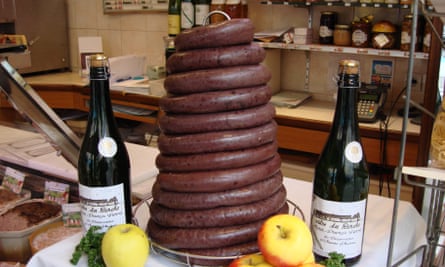
This fascinating fair in the depths of the Normandy countryside is for those with a penchant for charcuterie. The Foire au Boudin in Mortagne-au-Perche sees artisans from all over Europe gather to celebrate the most sophisticated of sausages, from black pudding, for which the town is known, to white pudding, tripe and charcuterie. The dozens of food producers exhibiting also showcase France’s best cheeses, wines, ciders and spirits. There are chef and bakery demonstrations, too, but its most curious spectacle is the competition that sees locals race to eat metre-long lengths of black pudding, to the cheers of the crowds.
foire-au-boudin.fr
Fête de l’Omelette Géante, Bessières, Occitanie
8-10 April
It’s said that Bessières’ giant omelette festival was inspired by Napoleon’s visit to an auberge near the town, which served him such a delicious omelette that he insisted the chef cook a giant one for his army. There may not be much truth to the story, but the occasion has become a legend in itself. The main event, on Easter Monday (10 April), kicks off with volunteers – many of whom belong to the Global Brotherhood of the Knights of the Giant Omelette – cracking 15,000 eggs; these are then seasoned, whisked and cooked in a four-metre frying pan set over a bonfire. The surprisingly delicious omelette, which is more like scrambled eggs once it’s been stirred, is then served for free to the 2,000 festival-goers and celebrates the global community that sees Bessières linked to six other giant omelette festivals around world, from Belgium to New Caledonia.
omelettegeante.fr
Festival International de la Soupe, Lille
1 May, 3pm-10pm
The Wazemmes quartier in Lille is a melting pot of cultures all year round, with its market that offers myriad cuisines from around the world – from Latin-American to Lebanese. Each spring, the neighbourhood comes together to celebrate its multiculturalism with the Festival International de la Soupe. This vibrant festival takes place in the market square and sees some 60 different stalls offering soups from around the world, as well as recipes created by families, charity associations and other groups. The best one wins the star prize, La Louche d’Or – the golden ladle. There is beer by the barrel-load as well as a host of different international music groups playing everything from Indian drums to big band brass.
lalouchedor.com
Féria du Melon, Cavaillon, Provence
Mid-July (dates TBC)
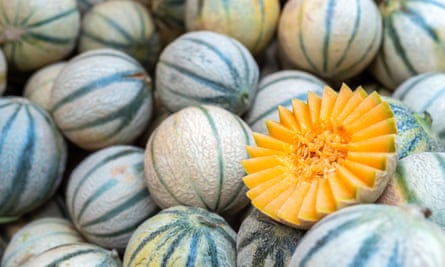
Summer in the Luberon sees an abundance of delicious fruit arrive at the markets, but the one with most fanfare is the Cavaillon melon. This variety of the Charentais melon has been cultivated in the town since the 15th century and the Féria du Melon sees visitors treated to tastings and tours of the producers’ farms, exhibitions, competitions and a carnival. Meanwhile, the local guild – The Brotherhood of Knights of the Order of the Cavaillon Melon – get on with tasting the sunshine-infused fruit to find the winning producer. In addition to eating melons, a key highlight of the weekend is the running of 100 Camargue horses around the streets.
avignon-et-provence.com
Roscoff Onion festival, Brittany
Mid-August (date TBC)
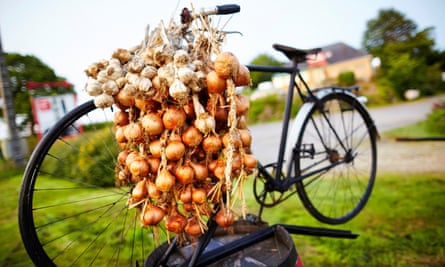
The pretty harbour town of Roscoff on Brittany’s north coast boasts a famous export: onions. Throughout the late 19th and early 20th centuries, the so-called “Onion Johnnies” would sell their famous alliums door-to-door from the handlebars of their bicycles throughout Britain, giving rise to the stereotypical onion-clad image of the Frenchman. Though Brexit put an end to the dwindling tradition, the delicate pink onions are still a treasured product in the area and the lively mid-August festival sees them celebrated in many forms. There are onion-string-plaiting competitions, visits to farms, Breton music and dancing, and huge vats of confit onions are cooked and served on the local speciality galette-saucisse, a sausage wrapped in a buckwheat pancake.
oignonderoscoff.fr
La Fête de la Figue, Solliès-Pont, Provence
25-27 August
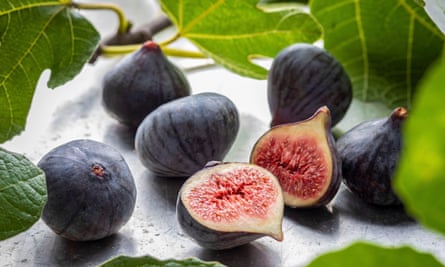
The town of Solliès-Pont in the Var’s Gapeau Valley is famous for its fig orchards that produce about 2,500 tons of the fruit each year and 75% of France’s entire fig harvest. The trees thrive in the abundant sunshine and water from the River Gapeau, while being sheltered by the 700-metre Mont Coudon. The harvest kicks off each year in August, when the town throws a huge party for its Fête de la Figue. By day, visitors can browse the many stalls selling everything from fresh figs, mostly the Violette variety, as well as tarts, jams, liqueurs and myriad Provençale specialities. There are cooking demonstrations and fig trails through the valley, but the main event is the opening night dinner in the town’s central plane-tree-shaded square. Each one of the four courses features figs in some way, while an energetic covers band plays and locals dance in the square long into the night.
ville-sollies-pont.fr
Fête de la Chataigne, Collobrières, Provence
15, 22 and 29 October
Just an hour inland from Saint-Tropez, the little town of Collobrières is set in the Massif des Maures’ cork oak and chestnut forests and is altogether more rustic than the Côte d’Azur. Famous for its chestnuts, the town celebrates its harvest for three Sundays in October, with parades, concerts and a market selling a wide variety of chestnut products from sweet chestnut paste to liqueur. Several producers roast chestnuts over braziers, leading to a delicious aroma filling the air. Local restaurants set out their tables on the street under the yellowing plane trees, and serve the traditional daube stew made with chestnuts and wild boar – it’s one way of controlling their damaging population.
visitvar.fr/en/
Fête du Piment, Basque Country, Nouvelle-Aquitaine
28-29 October
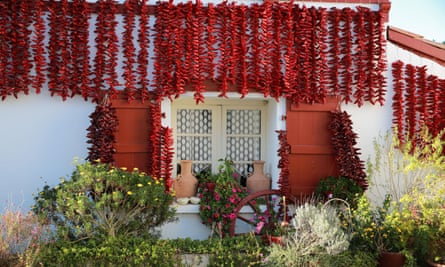
The French aren’t fond of spicy chilli peppers, but they do have a penchant for the gentler heat that comes with piment d’Espelette. They were first brought to the area from Mexico in the 16th century, and became popular because they flourished in the warm yet humid climate of the foothills of the Pyrenees, half an hour inland from Saint-Jean-de-Luz. The annual Fête du Piment marks the end of the harvest season and is a lively mix of concerts, marching bands and Basque dancing, as well as tastings, cookery workshops, drinks parties and banquets, with locals all dressed in the Basque country’s traditional outfits, all in red and white.
espelette-paysbasque.com

Fête de la Dinde, Licques, Hauts -de -France
Mid-December; dates TBC
The tiny town of Licques, just half an hour inland from Calais, has been famous for its poultry since the local abbey’s monks began rearing turkeys in the 17th century. Each year, the locals and its 80 poultry producers (of a population of just over 1,600) celebrate this history. The main event kicks off with la potée, the hotpot – a huge cauldron warmed by a fire pit contains tasty, warming turkey soup which is served to attendees. Local producers bring their live turkeys to show off and which are herded by children up the street, followed by a parade of brotherhoods (guilds) representing other regional food specialities, with everyone stopping for mulled wine and spicy chicken wings from stalls along the way. The ensemble gathers in a huge marquee, where the festival feast of roast turkey and chips is served. There’s a food market at which to stock up for the festive period, offering everything from poultry to cheese and wine.
licques-volailles.fr
[ad_2]
#Mange #tout #food #festivals #France
( With inputs from : www.theguardian.com )










